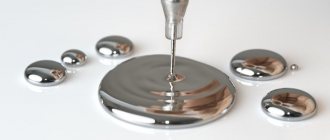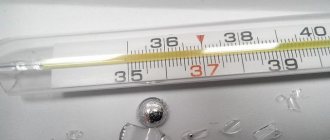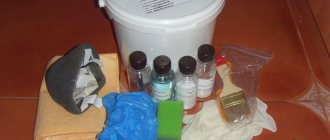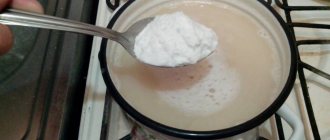Liquid metal
Since childhood, everyone knows that metal is something durable, hard, and shiny. The definition of chemical elements belonging to the group of metals was given by Mikhailo Lomonosov two and a half centuries ago. But, as always happens in practice, every rule has its exceptions. So metals do not always look the way the great Russian scientist determined they should look. Here's mercury. This is a metal that occupies the 80th cell of the table of chemical elements developed by the great chemist D.I. Mendeleev. But under normal human conditions, mercury is not a solid substance, it is a liquid. And this is the only liquid metal known to science today.
Quite a lot can be said about the amazing properties of this chemical element. But precisely because of its qualities, mercury is a special chemical element. Where is mercury used in modern industry, showing its characteristic features? There are many such industries - from the well-known medical thermometer to nuclear-hydrogen energy.
Mercury at home
The international community recognizes mercury as one of the most aggressive substances that pollute the environment. But without this chemical element it is impossible to imagine many areas of human life. At home, many people probably have thermometers, where the temperature indicator is a column of mercury, fluorescent lamps, the bulbs of which are filled with mercury vapor mixed with the inert gas argon, and some batteries in mobile phones. These items in themselves are not dangerous, but necessary and useful. But if damaged, they can cause serious health problems for everyone at home. The only question that should be asked if a broken thermometer suddenly appears at home is: “What should I do?”
Avoid mistakes
There are a number of common mistakes when cleaning up mercury:
- Using a vacuum cleaner.
- Collect balls with a broom, stiff brush, or rag.
- Throwing mercury into the garbage chute, onto the street, or flushing it into the water supply system.
- It is very dangerous to leave items of clothing or linen at home that have been in contact with mercury.
If you break a mercury thermometer at home, do not panic. Follow the rules described and everything will be fine. If you are not sure of the correctness of your actions, it is better to immediately contact the Ministry of Emergency Situations.
Such a familiar thermometer
Everyone has been familiar with glass thermometers with a thin vacuum flask filled with mercury - a capillary - and a division scale since childhood. This is the most familiar and necessary medical device in any family. Yes, now you can buy electronic thermometers of various shapes - from those designed for infants in the form of a pacifier to non-contact ones. But still, the vast majority of people consider mercury thermometers to be the most accurate and practical. But few people think about the danger lurking in the thermometer.
Why, it would seem, was it necessary to invent a mercury thermometer if the substance that helps measure body temperature is very dangerous? But it was mercury that became the liquid that satisfies the needs of accurate temperature measurement, expanding evenly as it increases, rising up the capillary of the thermometer. The mercury thermometer was invented in the 18th century as an improved version of the alcohol thermometer. In our country, the Celsius scale is used to measure temperature; in Western countries and America, temperature is measured in Fahrenheit. Using a mercury thermometer at home, few people think about the answer to the question “what neutralizes mercury” if the thermometer suddenly breaks.
Safety precautions
We learned how to neutralize mercury, let's talk a little about safety precautions.
This is a difficult process that can take several hours. Therefore, every fifteen minutes it is worth taking a break, going out into the fresh air. You need to drink plenty of fluids, as the metal is excreted from the body by the kidneys.
What you should pay attention to:
- Do not wash clothing that has been in contact with mercury in a washing machine.
- It is strictly forbidden to throw silver balls into the toilet; they will fall onto the walls of the pipes and continue to produce toxic evaporation and poison the residents of the entire multi-story building. The same goes for the garbage disposal.
- When treating an infected room, do not turn on the air conditioner; particles will settle on the filters.
- Do not throw mercury balls into the furnace; toxic substances escape into the atmosphere with smoke.
To avoid this problem, you need to store the thermometer in a secluded place inaccessible to children. It's better to use electronic versions.
Living and mercury
Mercury has been known to mankind since ancient times. Beautiful, scarlet stones of cinnabar, a natural mercury mineral, were mined by people to obtain bright paint; it is not for nothing that the stone is called “dragon’s blood” in translation from ancient Persian. And even then, mercury was used for amalgamation - one of the methods for purifying gold. At the same time, it was known about the toxic properties of mercury compounds, such as sublimate, which is still used as a disinfectant today. Mercury is a unique metal; it begins to melt at a temperature of approximately -39 degrees Celsius. Everyone has heard that it is very poisonous. Why mercury from a broken thermometer is dangerous to humans needs to be clarified.
If mercury is exposed to open air, it begins to evaporate like water, and active evaporation begins already at 18 degrees Celsius. Mercury vapor saturates the air in a room, especially if it is not ventilated. And such air becomes dangerous for humans, domestic animals, and even indoor plants and fish in an aquarium. The peculiarity of this chemical element is that it is capable of accumulating, that is, accumulating, in a living organism, and it is almost impossible to remove it. Mercury accumulates until a critical limit for its concentration in the body is reached. Moreover, in the first stages of such poisoning, the symptoms are so mild that they can be mistaken for fatigue or a mild cold, but not for a serious health problem that is life-threatening.
Chemical methods of demercurization
chem. block / safety precautions / chemical methods of demercurization
Mechanical cleaning, no matter how thoroughly it is carried out, still cannot be considered sufficient. Small drops, especially from crevices and cracks, cannot be completely removed; in addition, it is impossible to remove mercury vapor adsorbed by the surface, therefore, after mechanical cleaning, chemical treatment of contaminated areas must be carried out.
Various chemical treatment methods rely on either oxidizing mercury to form an oxide or chloride, or converting it into a finely dispersed state, making it easier to clean up. However, it should be borne in mind that mercury is chemically very stable. For example, its first ionization potential (10.43 V) is higher than the ionization potentials of gold (9.39 V) and platinum (9.00 V).
For this reason, chemical degassing agents are only able to oxidize the surface of the mercury and are therefore only effective on very small droplets. A protective film forms on larger droplets, but the effect of reducing the concentration of mercury vapor in the air is only temporary.
When the temperature rises or mechanical stress occurs, the oxide film cracks and the evaporation of mercury resumes.
Not all of the chemical treatment methods described in the literature are quite effective. For example, it is completely useless to cover mercury with sulfur, since at room temperature and even when heated to 100 ° C, mercury and its vapor practically do not interact with crushed sulfur. Metal powders that form amalgams should not be used for processing, at least without further thorough cleaning, since this technique does not reduce, and may even increase, the rate of evaporation of mercury.
It is also not recommended to use hydrogen sulfide gas. At concentrations that are not harmful to health, hydrogen sulfide is ineffective. The use of high concentrations (1 g/m3 and higher) in a laboratory room is associated with serious technical difficulties; in addition, the resulting protective film of mercury sulfide is not durable, and some time after demercurization the concentration of mercury vapor in the air can recover to a dangerous level.
Demercurization with iron (III) chloride solution
The demercurization method, based on the interaction of mercury with a FeCl3 solution, is considered one of the simplest and most reliable. As a result of a chemical reaction, small drops of mercury are converted into oxides and chlorides; larger drops, when mechanically mixed with the solution, become finely dispersed, which increases their reactivity and facilitates subsequent cleaning.
For demercurization, it is recommended to use a 20% aqueous solution of FeCl3. More dilute solutions are less stable due to hydrolysis. The solution is prepared at the rate of 10 liters per 25-30 sq.m. room area. Small portions of ferric chloride are dissolved in cold water with stirring. The surface to be treated is generously moistened with the solution, then wiped with a brush several times to better emulsify the mercury and left until completely dry. After 1-2 days, the surface is thoroughly washed, first with a soap solution, then with clean water to remove reaction products and unreacted mercury.
Please note that ferric chloride solution causes severe corrosion of metal equipment and appliances, as well as damage to wooden furniture and some plastics. It is recommended to protect the metal parts of devices by lubricating them with Vaseline before treating them.
Demercurization with potassium permanganate solution
The method is based on the interaction of mercury with free chlorine formed during the reaction of potassium permanganate with hydrochloric acid. As a result, low-toxic, water-insoluble calomel is formed:
2KMnO4 + 16HCl = 2KCl + 2MnCI2 + 5Cl2 + 8H20; 2Hg + Cl2 = Hg2Cl2
Calomel left in air decomposes over time, releasing metallic mercury, so after demercurization, the treated surfaces are thoroughly washed.
What's happening?
Mercury is dangerous for all living things, it disrupts metabolic processes, a person initially feels weakness and apathy, which over time develop into disruptions in the functioning of all organs: the kidneys, liver, heart, lungs suffer from excess mercury in the body. Death can be caused by mercury poisoning from a thermometer. The symptoms and consequences of inhaling mercury vapor or, even worse, ingesting mercury through the mouth can be very scary.
Mercury poisoning, like any other toxic and dangerous substances, can be acute or chronic. Acute poisoning is characterized by headache, vomiting and drooling, sore throat and stomach, swelling and bleeding of the gums, and body temperature may rise. Acute poisoning occurs approximately 2 hours after a significant dose of mercury enters the body.
Chronic poisoning is the result of prolonged inhalation of mercury vapor in low concentrations. It often develops in those people in whose home a mercury thermometer was once broken, but the cleaning and neutralization of the substance was not carried out as it should have been done.
If this happened
A broken thermometer seems like such a small thing. You just need to collect the fragments, remove the mercury balls, and wash the floor. But it's not like that at all. A broken mercury thermometer is a serious danger for everyone at home. Mercury vapor poisoning begins as soon as this substance enters the open air from a sealed glass flask. The question of what neutralizes mercury fades into the background, giving way to the question of how to collect it. Sweeping begins, a vacuum cleaner and wet rags are connected. But it is strictly forbidden to use what people usually use to clean up when removing a broken thermometer.
Mercury is a liquid, and it’s impossible to collect it, say, like plasticine, into a ball, and it’s also impossible to wipe it with dry rags. From the impact that breaks the thermometer capsule, the substance breaks up into tiny particles scattered around the room. Working with a broom only makes the situation worse, as sorghum twigs or synthetic bristles crush the mercury balls into even smaller pieces. A vacuum cleaner will not help either, since, on the one hand, it removes mercury, and on the other, along with the exhaust air in the form of tiny dust, it sends it back throughout the room, besides, the vacuum cleaner that removed the mercury will then have to be disposed of, because it will be cleaned of the smallest particles mercury clogged into all the parts will not work.
Wet rags cannot remove mercury, and particles of the substance that has begun its toxic work can get into the cracks of the floor and into the wool fibers of the carpet. If in the room where the thermometer broke there is a carpet or rug on the floor, then it is easier to dispose of them by wrapping them in a thick plastic bag and removing them from the room. But the most convenient way to remove mercury balls from the floor is with a regular medical bulb, collecting the mercury in a glass jar.
Appeal to professionals
To carry out high-quality cleaning of your apartment from mercury, you need to contact professionals. Most cities have mercury services. Their services are paid.
also call the Ministry of Emergency Situations, but they provide assistance only in the form of verbal recommendations on how to clean the carpet and apartment of toxic metal.
Private services post their contacts in advertisements. They can be found on the Internet. The cost of measuring mercury vapor costs about 3,000 rubles. The price of the service for professional cleaning of an apartment from toxic metal is negotiated individually.
You can also bring your own collected mercury to the organization and hand it over for recycling. The price of the service is 80 rubles. You shouldn't skimp on it. It is prohibited to pour hazardous waste down the drain or throw it in a landfill .
Cleaning a broken mercury thermometer step by step
If there is a broken thermometer, what should you do? The answer to this question will consist of the following recommendations:
- Take all household members, including animals, out of the room, or better yet, out of the apartment, for a walk until the cleaning is completed.
- Close the door of the room.
- Open all windows wide. The influx of cold air will restrain the active evaporation of mercury and will reduce its concentration.
- Put on a medical mask, or better yet a respirator, and rubber gloves, and change into clothes that you won’t mind parting with after cleaning.
- Prepare a medical bulb - a syringe, a glass jar with a tight-fitting lid, potassium permanganate or bleach, cold water.
- Turn on bright lighting, as mercury is a shiny metal and will be easily visible in bright light.
- The most convenient way to collect mercury balls is by sucking them up with a syringe and dropping them into a jar; This medical item makes it easier to fish out mercury from cracks in the floor and under baseboards. There are recommendations for cleaning up mercury with metal wire or sheets of paper, but mercury constantly rolls up and crumbles into small droplets at the slightest careless movement, so there is nothing more convenient than a syringe at home.
- After the mercury has been collected, the place where the thermometer was broken must be treated with a concentrated solution of disinfectants - potassium permanganate or bleach, diluted with cold water.
- A jar of collected mercury, a syringe, fragments of a broken thermometer, a gauze bandage, a respirator, and clothing must be taken to the SES, where they must be accepted for disposal. Under no circumstances should these items be thrown into the trash.
Final stage
It is important to understand that not only the jar of mercury is subject to disposal, but also the gloves, mask and bags (possibly shoes) in which the cleaning was carried out.
In addition, even if vapor poisoning is minor, a number of preventive actions need to be taken:
- Drink some kind of absorbent (activated carbon, Atoxil, etc.).
- Drink plenty of fluids, water and milk.
- After cleaning, rinse your mouth and throat with a weak solution of manganese.
What neutralizes mercury?
Mercury is a dangerous substance for living things. It belongs to hazard class 1 in accordance with the regulatory document - GOST 17.4.1.02-83. The solution for demercurization of mercury on an industrial scale is sulfur powder. It enters into a chemical reaction with the metal, transforming it into a non-volatile compound - mercury sulfide. This substance is quite easy to remove, since it is solid, unlike the liquid metal itself, which tends to scatter into small balls at any touch.
At home, you rarely find sulfur powder for cleaning a broken mercury thermometer. But mercury and potassium permanganate, or mercury and chlorine-containing detergents will neutralize the harmful liquid metal. Yes, it is best to first remove the mercury as thoroughly as possible, and then treat all surfaces in the room with bleach or potassium permanganate. The floor can simply be filled with a concentrated solution of chlorine-containing detergent, for example to disinfect toilets. It is best to clean the area again within 24 hours.
Precautions when performing work
According to Order No. 71 Federal Law dated January 1, 2001, the supervisor of employees performing work to eliminate toxic substances and their vapors is responsible for compliance with safety rules. When processing it is prohibited:
- Persons not taking part in the work must remain at the site of contamination.
- People under 18 years of age are not allowed.
- Work without protective equipment.
- Eat, drink, undress, take off respirators.
- Dispose of hazardous metal down the drain.
- For equipment under pressure (for example, the Rosa device), open the air access valve.
- Store and transport mercury in non-hermetically sealed containers or glass containers.
After completion, work equipment, clothing, and protective equipment are neutralized. Personnel need to take a shower and rinse their mouth with a 0.25% solution of potassium permanganate.
What is better - bleach or potassium permanganate?
It is only in disaster films or action fairy tales that a hero appears who saves everyone and saves them from imminent death. In life, in any critical situations, it is better to do everything yourself and carefully, without counting on outside help, because only in large cities there are services that professionally deal with the disposal of problematic household waste and cleaning of premises in accordance with the danger that has arisen. To independently get rid of the dangerous consequences of a broken thermometer, it is best to use available means that are no less effective than those of specialists.
You can neutralize mercury residues with potassium permanganate or bleach. Solutions must be concentrated, and therefore quite caustic. Pour 1 tablespoon of vinegar essence into 1 liter of potassium permanganate solution and add 1 tablespoon of regular salt. Potassium permanganate for cleaning will have an almost black tint, and it will definitely leave indelible marks on the floor surface. It is more convenient and easier to use chlorine-containing products for cleaning and disinfecting the house, the same “Whiteness”, for example. Treat the surface after mercury with this product for 15 minutes, then rinse with clean water. This cleaning should be repeated as often as possible within 2-3 weeks.
Elimination of consequences at home
Demercurization of an apartment begins with the assembly of metal balls. Then the mercury (its traces on the coatings) is neutralized. Moreover, it is important to remember that the actions are performed in this sequence. This is due to the fact that neutralizing solutions work more effectively when they come into contact with microparticles of mercury.
If they are used on surfaces that have not been previously cleaned, the toxic substances will continue to act for some time. Then you need to dispose of the mercury. To do this, at the first stage, neutralizing solutions are used, and then all containers and materials are transferred to the Ministry of Emergency Situations.
For complete peace of mind
So, the mercury thermometer did break. But demercurization was carried out correctly and thoroughly, all dangerous things were disposed of according to the rules in a special organization that deals with such problems. And to reassure yourself and your family, you can use a special mercury vapor analyzer to check the result. It consists of test strips that, when interacting with mercury vapor, change color. This is a cheaper and more accessible way to check the safety of the premises than calling in specialists to conduct a similar inspection at home. Instructions for using test strips are included with each analyzer kit, and can be purchased in specialized stores.











